If you need more evidence that Americans are escaping to the outdoors in droves, here it is: Over Memorial Day weekend, visitation numbers at Yellowstone National Park were up 50 percent from the same weekend in 2019. The only reason the National Park Service didn’t use 2020 data is because, due to the COVID-19 outbreak, a limited number of the park’s entrances were open to visitors last year.
Between Friday, May 28 and Monday, June 1, 43,416 vehicles passed through the gates of the world’s first national park. In 2019, over the same weekend, 28,890 vehicles entered the park through one of its five gated entrances. The uptick in visitors spurred the National Park Service to issue this statement: “Millions of people visit the park in June, July and August. If you plan to travel to Yellowstone this summer, plan ahead, expect crowding and recreate responsibly to protect yourself and the park.”
And this isn’t just a Yellowstone trend. Nearby Grand Teton National Park, nearly 90,000 people visited in April alone. That’s up from just shy of 60,000 in 2019 (again, entrance to the park was limited in 2020). Both Yellowstone and Grand Teton broke visitation records for both April and May this year.
In Colorado’s Rocky Mountain National Park, the Park Service is testing out the use of “timed entry permit reservations” in anticipation of a very busy summer. Visitors who want to see the park first have to go to www.recreation.gov and acquire a permit for one of two sections of the park. Presently, the permit system is open for visitors planning to see the park in June and July, and in July, the system will open for visitors planning August visits. This pilot system is in place for its second year — it started last year during the outbreak and ended in October 2020. Once it expired, the park experienced a 28-percent increase in visitors in both November and December.
In California’s Yosemite National Park, expectations for a busy season coupled with COVID-19 restrictions placed on Park Service employees caused the NPS to start a day-use permit reservation system in February. A day-use permit is valid for a single vehicle and everyone in the vehicle.
Crowding is nothing new in America’s national parks, but the COVID-19 outbreak has proven a catalyst for administrative changes to how the NPS is managing its massive public lands holdings — in some national parks, we may never be able to just pull up, pay a fee and drive through them at our leisure again. Other federal agencies, like the U.S. Forest Service and the Bureau of Land Management, are also now on notice thanks to an increasing number of visitors — many of them new to the outdoor culture and unfamiliar with the accepted norms when it comes to behavior. For instance, in western Wyoming, BTNF officials reported the discovery of 21 abandoned campfires that were still too hot to touch on the forest over the Memorial Day weekend — an increase of 300 percent from the same period a year ago when seven unattended fires were discovered. In 2019, Forest Service officials found only three abandoned fires.
The U.S. Forest Service reported in late May that, in 2020, more people than ever before visited national forests and grasslands. In all, Forest Service holdings saw some 268 million visits last year, up 18 million from 2019 (12 percent). To couple the complications that came with such a marked increase in visitors, the agency was only able to keep about 80 percent of its recreation sites open during the worst of the pandemic. Likely because of limited access to recreation sites, wilderness areas and dispersed recreation sites (informal campsites, pullouts, picnic areas, etc.) experience the largest impact from visitors — a 25 percent increase in 2020 from 2019.
And, despite the influx of visitors and the crowding that likely resulted, those who visited overwhelmingly left with a positive impression of the places they experienced. According to Forest Service data, 95 percent of the visitors they asked reported being “satisfied” or “very satisfied” with the time they spent on public lands.
“We’re honored to have helped so many people safely find respite and relief during the pandemic,” said Forest Service Chief Vicki Christiansen. “Our national forests and grasslands offer some of the most readily available and valuable outdoor recreation settings in the country. As we enter the summer months this year, we look forward to providing positive experiences on our national forests and grasslands, and working with partners to support safe and equitable access to the outdoors.”
For many of us who have known for years just how special our public lands are all across the country, the increase in visitation — and the associated impact it has on the places we love — leaves us at an interesting philosophical junction. It’s downright un-American to keep Americans off of public lands, but, of late, it sure feels like there are too damned many Americans out there. And their presence is having an impact on the things we love to do, whether it’s fishing, hunting, climbing or riding. And we all have our anecdotes from the Summer of COVID that lead us to believe that more people on public lands isn’t necessarily a good thing.
And, judging from the early numbers coming from federal agencies already this spring, it appears this summer will be similar to last summer. We hear a lot about responsible recreation from federal agencies (#RecreateResponsibly is the NPS social media gathering place for tips and news on the topic), but the advice largely focuses on the pandemic and how to keep everyone safe as the nation continues to play whack-a-mole with COVID outbreaks. While there is mention of the seven “leave no trace” principles, it’s not prioritized in a manner that emphasizes their importance to those new to the outdoors. Those of us who have taken advantage of our public lands resources for years — for many of us, it’s generational — have cultivated a unique culture that, for the most part, has ensured our time spent outside will be impacted as little as possible by others. This culture is foreign to those who are just now, thanks to the need to find safe and healthy recreation in the time of COVID, retreating to the outdoors.
Perhaps, as we continue to see federal and state agencies produce data showing us that more and more Americans are turning to outdoor recreation, how to behave in the outdoors ought to be where the emphasis is placed when it comes to #RecreateResponsibly. I’m sure the handful of Bridger-Teton National Forest employees who turned up almost two dozen abandoned campfires over the Memorial Day weekend would agree. Imagine if those 21 campfires had been abandoned a month later, after 30 days of hotter, drier weather?
And, from a public lands user who’s been at it for a lifetime, I know I would appreciate the assist. It’s not that we don’t want to welcome new visitors to the places that make America so incredibly unique. We just want the new visitors to know that, when they show up ill-prepared or uneducated, they’re having an impact on the rest of us who’ve managed to keep these places intact over the years. And not just for us, but for everyone who comes along after us. It’s long been a legacy proposition. My grandparents taught me the ropes, and I’m teaching my kids and grandkids the rules now. The best stewards of our public lands, by and large, are the people who care so much about them and have spent years getting to know them.
That’s why, even when more and more people are visiting, and many for the first time, the vast majority still leave with a positive impression. Nobody wants that to change. Nobody wants to visit a national forest or a state park and be disappointed, right?
So as you ponder that family road trip or maybe the first camping trip in years, keep in mind that public lands remain America’s greatest treasure. Understand that you’re joining a community that already exists and, for the most part, wants you to enjoy your time outdoors. Remember, too, that we’ve been looking out for others who might come after us for a very long time, knowing that if we make their experience on public lands better, they’ll do the same for the next visitor..
And that next visitor might be you. So … when you arrive at a clean campsite, and you don’t see garbage on the roadside, know that the visitor before you had a lot to do with that.
Pay it forward. Please.





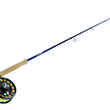
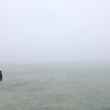
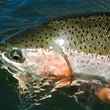



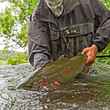
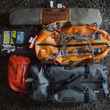




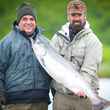



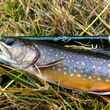
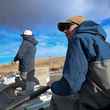



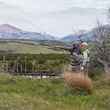



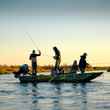
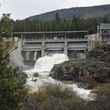
Comments
Bob DeVaughn replied on Permalink
Band-wagoners and dilettantes will leave before long- they left after "the summer of COVID." People who appreciate the wild will care for it. The more people enjoying and appreciating our public lands, the more attention and money they get from politicians.
Mike P replied on Permalink
This just shows that we need more protected public lands, not fewer!
Pages